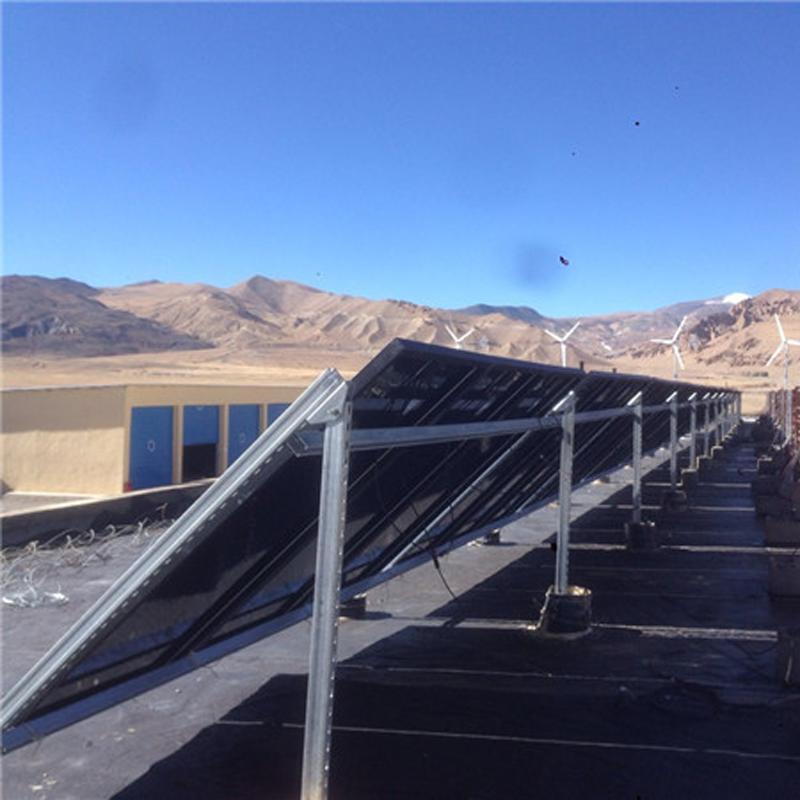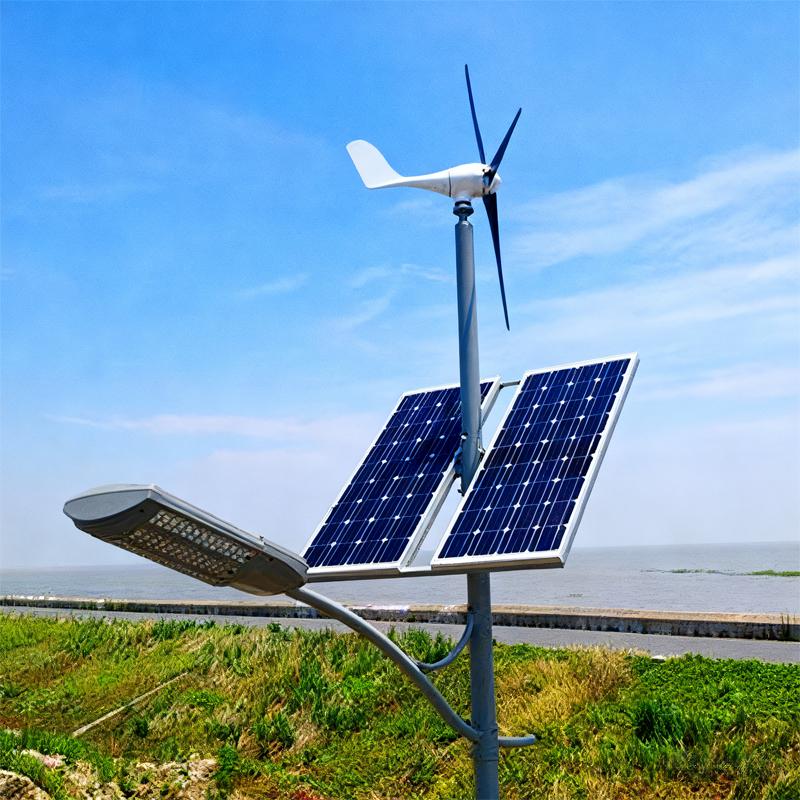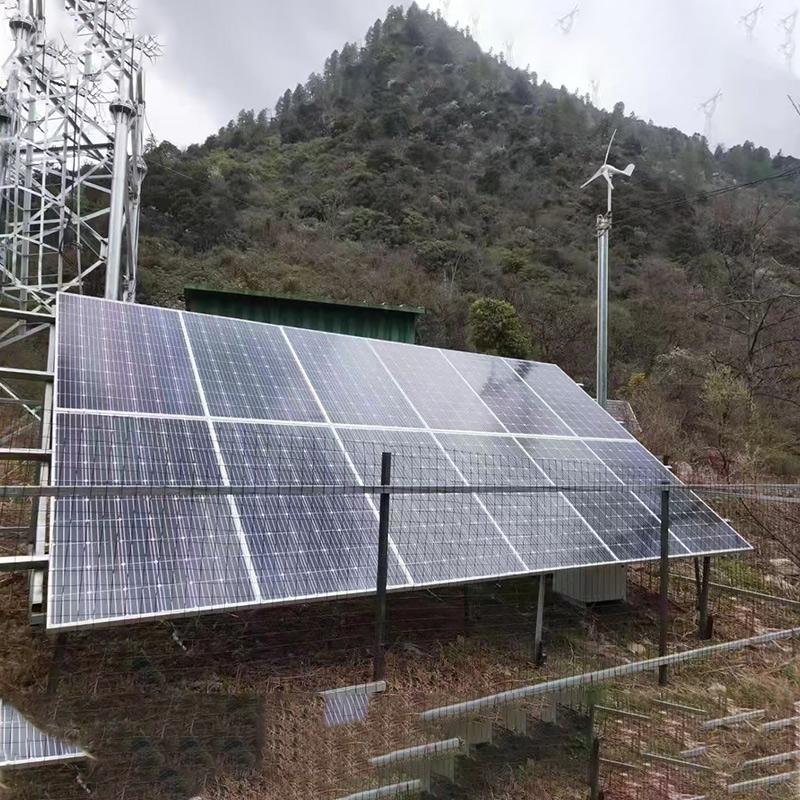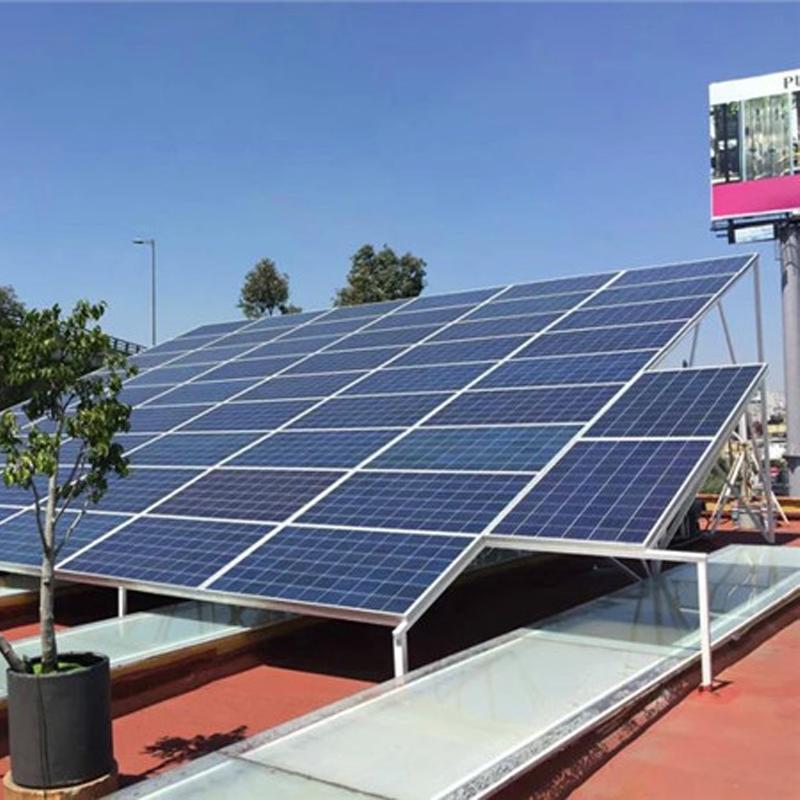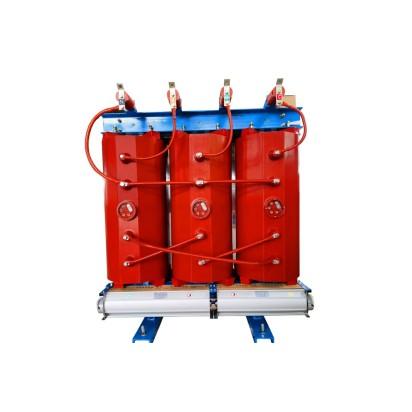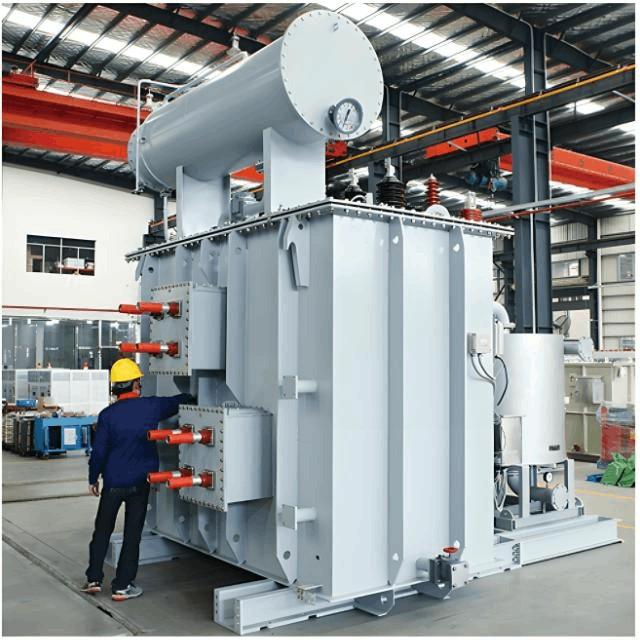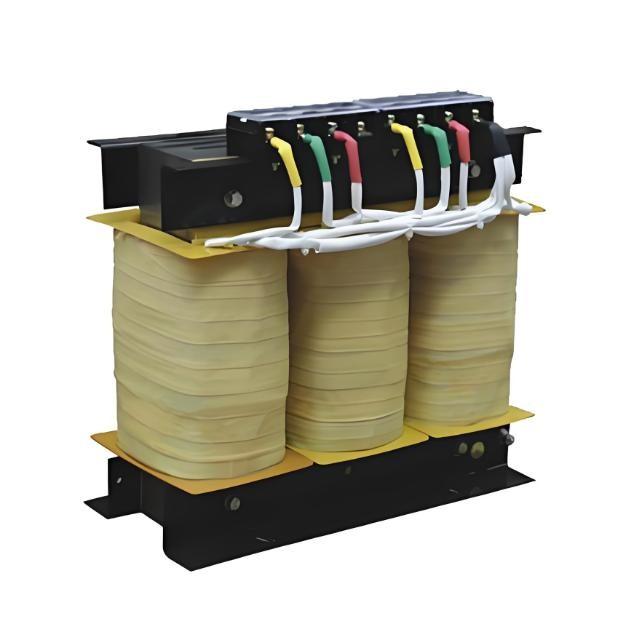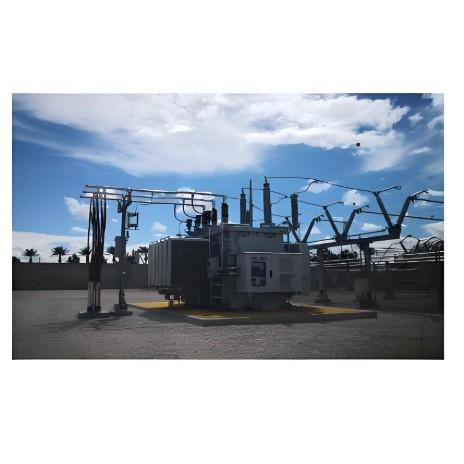A cikin yadda ake amfani da su wajen taimaka masu shirya, taimakawa aiki da tattalin arziki, da kuma gina microgrid, an gina system mai wind-solar-storage mai tsari. Wannan system yana ƙunshi aiki da renewable energy sources kamar wind, solar, da kuma energy storage. Ta zama na "flexible dispatch, high integration, and digital twin", tare da muhimmanci masu tayyata da kuma ingantaccen energy. Yana iya tabbatar da kyau a kan tushen da ya faruwa daga wind da solar, da kuma taimakawa waɗanda suka amfani da shi da energy da ya fi sani, inda zai iya tabbatar da tushen da aka bukata a matsayin energy management.
Muhimman Mafi Taurari: 7 Tushen Da Za Su Taimaka Wajen Tabbatar Da Energy Management
Tsarin Energy Mai Tsari: Multi-source Coordination and On-demand Allocation
An samu wannan system da ya taimaka wajen taimakawa energy flow daga wind, solar, energy storage, da kuma public grid don in samun "on-demand dispatch":
Idan ana samu abubuwa daga wind da solar, zai iya koyar da tushen da aka bukata ta hanyar load, sannan za a gina abubuwan da ba suka dole a cikin energy storage.
Idan ana samu abubuwan da ba suka dole daga wind da solar ko a lokacin da akwai peak electricity consumption, zai iya koyar da energy storage don in tabbatar da tushen ko kuma zai iya ci gaba da power to shaɗi daga grid automatically.
Yana taimakawa "off-grid / grid-connected" dual-mode switching. A cikin off-grid scenarios, wind + solar + storage units zai iya taimakawa power collaboratively. A cikin grid-connected scenarios, zai iya taimakawa grid don in taimaka wajen tashizance, a yi aiki da tushen da aka bukata.
Highly Integrated Design: Simplified Structure, Cost Reduction, and Efficiency Improvement
An samu wannan system da ya amfani da "PV and ESS integrated" architecture, da ke ƙunshi photovoltaic inversion, energy storage management, da kuma energy regulation functions a cikin fadada device. Idan a duba da systems da suka fi split:
Yana haifar da external components da ke miliyan 50%, da kuma yana haifar da floor space (wanda single system zai iya haifar da 30% compared to split systems).
Yana haifar da installation process, bayan da aka fi tsara saboda aki biyo-biyo wa PV, energy storage, da inverter modules, da kuma yana haifar da wiring by 60% da kuma yana haifar da deployment cycle.
Yana haifar da complexity of later maintenance, tare da single-point fault detection more convenient da kuma yana haifar da operation and maintenance labor costs.
Digital Twin Control: Real-time Mapping and Precise Prediction
An fito da intelligent energy management system (EMS), wanda ke bincike "virtual mirror" of the system based on digital twin technology:
Real-time mapping of operational data such as wind speed, light intensity, energy storage capacity, and load power, visually presenting the entire process of "power generation - energy storage - power consumption".
Based on historical data and algorithms, it predicts the energy supply and demand trend for the next 24 hours and adjusts the energy storage charging and discharging strategy in advance (for example, based on meteorological data, it predicts weak sunlight and wind strength the next day and prioritizes energy storage on the current day).
Supports remote cloud control, allowing adjustment of operating parameters through a computer or mobile phone, without the need for on-site monitoring.
Safe and Reliable Operation: Multi-layer Protection, Resilient to Risks
It builds a comprehensive safety guarantee system from equipment to the system, eliminating operational risks:
Electrical safety: The inverter has overvoltage, overcurrent, and short-circuit protection to prevent equipment damage from voltage fluctuations.
Energy storage safety: The energy storage unit adopts fireproof and explosion-proof design, equipped with temperature and humidity monitoring, and automatically cuts off power in case of abnormalities.
Environmental adaptability: Core components are resistant to high and low temperatures (-30°C to 60°C), wind, sand, and rain, suitable for complex climates such as highlands, coastal areas, and deserts.
Grid compatibility: When grid-connected, it complies with grid voltage and frequency standards, avoiding impacts on the grid.
High Efficiency Energy Conversion: Low Loss, High Transmission, and Increased Revenue
The system optimizes energy conversion efficiency at all stages, reducing energy loss:
Both photovoltaic modules and wind turbines use high-efficiency power generation technologies, enhancing the capture rate of wind and solar energy.
The inverter has high conversion efficiency, and combined with energy storage charging and discharging management strategies, it reduces energy loss during storage and release.
The overall system energy utilization rate is ≥85%, and by adopting more advanced MPPT technology, it increases power generation by 15% to 20% compared to traditional wind-solar systems under the same wind and solar resources.
Long-life Energy Storage Assurance: Durable, Low Consumption, and Cost Reduction
The energy storage unit uses long-cycle-life battery cells, offering the following advantages: • The cycle life can reach over 5,000 times, and under normal use, the lifespan exceeds 10 years, reducing mid-term replacement costs.
It supports deep charging and discharging (discharge depth ≥ 80%), with high utilization of energy storage capacity, avoiding the problem of "false capacity marking".
It has self-maintenance functions, automatically balancing cell voltages, delaying capacity attenuation, and maintaining stable energy storage capacity over the long term.
Intelligent operation and maintenance early warning: Proactive detection, reducing downtime
The EMS system has fault early warning and self-diagnosis capabilities, reducing operation and maintenance difficulties:
Real-time monitoring of component status, such as abnormal wind turbines, photovoltaic shading, and battery cell attenuation, and pushing early warning information in advance;
Comes with a fault detection guide, clearly stating the cause of the anomaly and the solution steps, allowing non-professionals to handle it initially;
Supports operation and maintenance data statistics, automatically generating power generation, energy storage, and fault reports, facilitating the optimization of operation and maintenance strategies.
Core Configuration: Multi-component coordination, building a stable energy system
The system achieves smooth operation of the entire chain from "power generation - energy storage - dispatch - output" through the efficient coordination of core components:
Dual-source power generation unit: Wind power generation unit and solar photovoltaic modules work together, taking advantage of the complementary characteristics of wind and solar (solar power during the day and wind power at night or during windy periods), reducing the impact of intermittent single energy sources;
Wind turbine controller: Adapted to wind power generation voltage, converting wind power into stable electricity, and also featuring voltage regulation capabilities to ensure the quality of electricity connected to the system;
PV and ESS integrated equipment: Integrating photovoltaic inversion and energy storage charge and discharge management functions, uniformly regulating photovoltaic and energy storage electricity, simplifying the system structure;
Intelligent Energy Management System (EMS): Acting as the "system brain", it is responsible for digital twin mapping, energy dispatch, safety monitoring, and operation and maintenance early warning, achieving full-process intelligence;
Wide-range compatibility design: Supports a wide input voltage range (200V to 800V), with rated power covering 20kW to 50kW, and energy storage capacity of 50kWh to over 100kWh, adapting to different scale electricity demands.
Core Applications: 8 Scenarios, Empowering Grids and User Sides
Grid peak shaving and valley filling
Responding to grid load fluctuations, during peak electricity consumption periods (such as afternoons in summer and nights in winter), the energy storage unit releases electricity, reducing the pressure on grid power supply; during off-peak periods (such as early morning), it stores excess solar and wind power or low-cost grid electricity, smoothing the grid load curve and assisting in stable grid operation.
Stable power output
Compensating for the intermittency of wind and solar energy, through the energy storage unit's "peak shaving and valley filling", it ensures stable output voltage and frequency (three-phase AC 400V, 50/60Hz), directly supplying power to precision equipment (such as data centers, laboratory instruments), avoiding equipment failures due to voltage fluctuations.
Emergency backup power
When the public grid suddenly experiences a power outage (such as due to natural disasters or line faults), the system can switch to "off-grid mode" within milliseconds, with the energy storage unit quickly releasing electricity, providing continuous power to critical loads (such as hospital ICUs, communication base stations, emergency command centers), avoiding significant losses caused by power outages.
Independent power supply in microgrids
In remote areas without a grid (such as mountain villages, remote mining areas), the system can build an independent microgrid, generating power through the coordination of "wind + solar + storage", meeting the electricity needs of residents and production within the area, without relying on long-distance grid transmission, reducing grid construction costs.
Grid frequency and voltage regulation
As an auxiliary service device for the power grid, the system can quickly respond to fluctuations in grid frequency and voltage (such as frequency deviations caused by sudden increases or decreases in wind power or photovoltaic power), adjust the charging and discharging power of energy storage, and compensate for changes in grid load in real time, helping the grid maintain frequency stability (50/60Hz ± 0.2Hz) and enhance grid resilience.
Energy conservation and cost reduction for industrial and commercial users
In response to the pain point of "large peak-valley electricity price difference" for industrial and commercial users, the system stores low-cost grid electricity or surplus wind and solar power during off-peak hours (such as late at night) and releases stored energy during peak hours (such as during the day for production), replacing high-cost grid electricity and reducing enterprise electricity expenses. In some scenarios, electricity savings of 20% to 30% can be achieved.
Integration of renewable energy
Deployed near large-scale wind and solar power stations, the system stores excess electricity generated by the stations (preventing "abandonment of wind and solar power") and supplies the electricity to the grid when needed, improving the utilization rate of wind and solar energy and contributing to the achievement of the "dual carbon" goals. At the same time, it creates additional revenue for the power stations.
Protection of sensitive loads
For loads with high requirements for power stability (such as semiconductor production lines and precision testing equipment), the system provides "uninterrupted power support". It continuously monitors the quality of the grid and immediately switches to energy storage power supply without interruption if problems such as voltage sags or harmonics occur in the grid, ensuring that the loads do not shut down and reducing production losses.
Precise application scenarios: covering six core areas
Industrial and commercial parks
Supplying power to production workshops, office buildings, and supporting facilities within the park, reducing electricity costs through "peak shaving and valley filling", and serving as an emergency power source to ensure uninterrupted production lines, suitable for industries such as mechanical manufacturing and electronic processing.
Remote mining areas / villages
In remote areas without a grid or with unstable grids, an independent microgrid is constructed to meet the electricity needs of mining equipment (such as small crushers) and village residents, replacing diesel generators and reducing pollution and fuel costs.
Large public buildings
Supplying power to hospitals, data centers, and transportation hubs (airports, high-speed railway stations), providing stable output to ensure the operation of sensitive loads, and serving as an emergency power source during grid outages to prevent medical accidents, data loss, or transportation disruptions.
Supporting facilities for renewable energy power stations
Cooperating with wind and photovoltaic power stations, the system stores excess electricity from the stations, improving the integration rate of renewable energy, and providing stable power for the power stations' auxiliary equipment (such as monitoring and maintenance facilities), reducing the power stations' dependence on the grid.
Auxiliary services for urban power grids
Deployed in urban power grid load centers (such as commercial areas and residential areas), participating in peak shaving, valley filling, and frequency and voltage regulation, alleviating the pressure on power grid supply, especially suitable for areas with dense electricity loads and difficult grid expansion.
Field operation scenarios
Supplying power to field operation sites such as geological exploration, field scientific research, and border guard posts. The system's lightweight design is suitable for field transportation, and it can achieve "wind + solar + storage" autonomous power supply without complex installation, meeting the electricity needs of equipment operation and personnel living.
System configuration
product number |
WPHBT360-50-50K |
WPHBT360-60-60K |
WPHBT480-100-107K |
Wind Turbine |
Model |
FD10-20K |
FD10-30K |
FD14-50K |
Configuration |
1S2P |
1S2P |
1S2P |
Rated output Voltage |
360V |
360V |
480V |
Photovoltaic |
Model |
SP-600-V |
SP-600-V |
SP-600-V |
Configuration |
7S4P |
8S6P |
20S4P |
Rated output Voltage |
36V |
36V |
36V |
Wind Turbine inverter |
Model |
WWGIT200 |
WWGIT300 |
WWGIT300 |
Rated input Voltage |
360V |
360V |
480V |
Rated output Voltage |
400VAC |
400VAC |
400VAC |
Configuration |
1S2P |
1S2P |
1S2P |
PV and ESS integrate machine |
Model |
KP-20-50K |
KP-30-60K |
KP-50-107K |
Rated capacity |
51.2kWh |
61.44 kWh |
107 kWh |
Input Voltage range |
212-288V |
245-345V |
582-806V |
Rated Power |
20kW |
30kW |
50kW |
Rated output Voltage |
Three-phaseAC400V 50/60Hz |
Three-phaseAC400V 50/60Hz |
Three-phaseAC400V 50/60Hz |
Configuration |
1S1P |
1S1P |
1S1P |
EMS |
EnControl |










